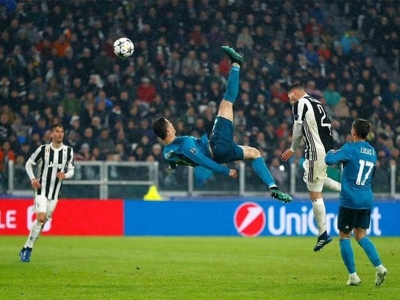What is an overhead kick in soccer?

Kinetic energy largely dominates the beautiful game of football as players cover a number of kilometres in a 90-minute game, in search of goals that separate the competing sides. But one of the more dramatic moments produced on the football field depends mainly on the potential energy of a player.
Energy and forces
The overhead kick, also known as the bicycle kick and scissors kick based on minor differences, sees the player utilising potential energy to carry out the acrobatic move. There are also forces in action as a player needs to contend with centrifugal and gravitational forces while trying to kick the ball overhead.
Three main phases
The overhead kick can be broadly broken down into three phases. The first, and most obvious phase, is the jump. The player places himself such that their centre of gravity is a little behind their impulse foot. This enables the player to gain rotational momentum by applying pressure on the ground. The jump phase is thus similar to the back somersault.
There is very little separating the second and third phase as it all happens really quickly in reality. The second phase is the kicking movement done by the player once completely air-borne. With other forces in action, the player needs great strength in their thighs and muscles to carry out this phase.
Changes direction and spread
The third and final phase is the moment of impact, when the player’s foot strikes the ball. When struck properly, the ball not only change direction, but also gains considerable velocity.
While all these happen within seconds, what really matters for the player is what happens next. What we have just described might seem like poetry in motion for those who love physics, but for footballers, their goal with these kind of shots is to find the ball in the back of the net!
Picture Credit : Google












